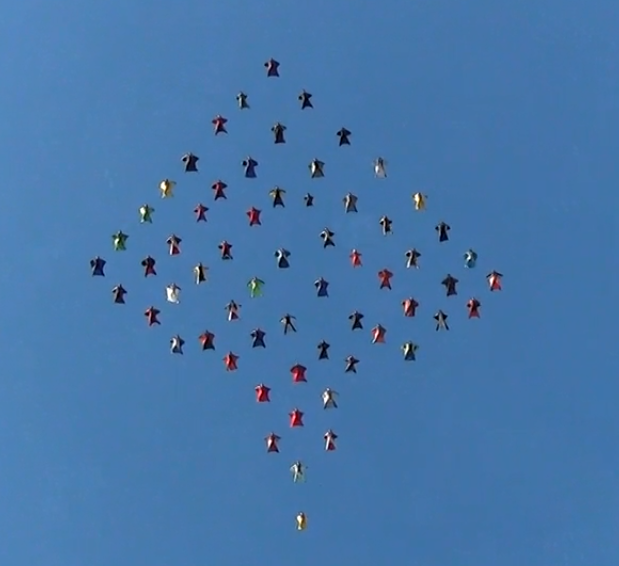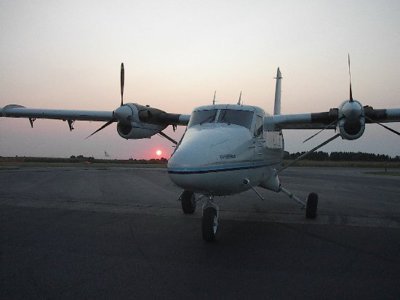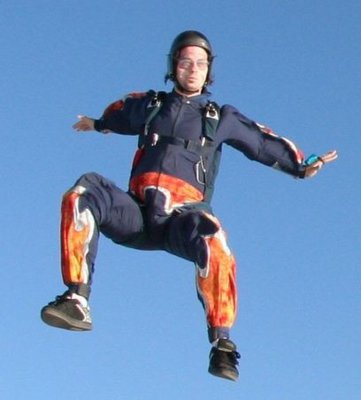Recommended Posts
velvetjo 0
QuoteA VFR pilot has the obligation to check on VFR maps where he is going to fly and what area he has to avoid or fly over with caution like: a DZ like Pepperell Mass. (where it happened) was certainy identified on the VFR map as a jumping area, it could be a training Air Force area, a cannon firing range area or a blasting area.
The safest place to fly for a pilot going over a DZ is flying well below the opening altitude where open parachutes can be seen and better yet doing so and passing downwing over the DZ.
Nice thought, and good luck with that approach. Let's look at the example of a GA fast-mover like a corporate bizjet. When do you think was the last time that the corporate pilots on that airplane whipped out a sectional chart during a VFR leg? They're moving so fast they'd spend half the flight just re-folding the chart. Their GPS/FMS databases and WAC both don't indicate DZ's, nor would a typical standard briefing (IFR or VFR) since it's a published NOTAM.
Bottom line is that in our airspace system it's see and avoid for VFR. Sport skydiving is supposed to be a purely VFR activity, so we need to accept the reality that others will pass through our playground on a regular basis. Do what you need to do to keep yourself safe, but don't rely on assumptions about someone else's judgment when it's your butt on the line.
Lance
kallend 1,619
QuoteA VFR pilot has the obligation to check on VFR maps where he is going to fly and what area he has to avoid or fly over with caution like: a DZ like Pepperell Mass. (where it happened) was certainy identified on the VFR map as a jumping area, it could be a training Air Force area, a cannon firing range area or a blasting area.
.
DZs are NOT shown on WAC charts, which are perfectly legal for VFR navigation.
I've never been told of a DZ by a FSS briefer.
Oftentimes ATIS will report jumping activity at DZs near the primary airport.
Out of curiosity I just submitted a DUATS request for "standard route briefing" for x-country flight that would pass right over the top of Skydive Chicago. (DUATS are an FAA approved way of getting "all available information"). No mention in the resulting NOTAMS of the existence of a DZ.
The only sure way to survive a canopy collision is not to have one.
QuoteNear misses are not common, but I bet you'll find more than a few videos on youtube or skydivingmovies of near misses in freefall.
There have been skydiver/plane collisions. The one I remember happened in Massachusetts back in the 90's, I don't remember the exact year, and without researching, I'm just guessing. But apparently a small private plane with its transponder or radio turned off got lost on a flight from Boston to some point west, overflew a DZ right when its plane was letting a load out. The lost plane happened to be flying below and just behind the DZ plane. The guy who jumped, hit the horizontal stabilizer of the lost plane, breaking his ankle, and sending the plane into an unrecoverable spin to the ground. That's my best recollection of the details.
http://www.ntsb.gov/ntsb/brief.asp?ev_id=20001211X13693&key=1
That's the one you are refering to.
Here's another jump plane to plane collision:
http://www.ntsb.gov/ntsb/brief.asp?ev_id=20001213X28948&key=2
and another:
http://www.ntsb.gov/ntsb/brief.asp?ev_id=20001212X16418&key=2
And a jumper into another jump plane:
http://www.ntsb.gov/ntsb/brief.asp?ev_id=20010601X01046&key=1
www.diverdriver.com
ATP/D-19012
FB #4125
Piece 0
I ask because, while I do believe in checking for traffic, it can occasionally be very difficult to spot an airplane in 10-15 seconds (if you're first out, 5 seconds if not), 10,000' below, in some poorly understood cone around the DZ, against the right kind of background. I do look around for traffic on the way up but my view from that position is very limited. Pretty much the only time you can clearly see the DZ on jumprun is when you're in the door. Most of the time it's not a problem but sometimes it can take me almost a minute to locate a plane/canopy from altitude even if I know where they are. Am I just blind? Are pilots taught something about this?
Proudly uncool since 1982.
wolfriverjoe 1,339
QuoteAm I just blind? Are pilots taught something about this?
Yes and no. Keep in mind that the pilots get a lot of practice looking for traffic-in VFR conditions you spend the majority of the time doing just that. Also, conflicting traffic is the hardest to spot because it has the least relative motion. If the other guy isn't moving in the window, you are on a collision course. I don't want to dismiss this as a threat, but look at how often the collisions happen. I'm not being complacent, but "big sky" avoidance works pretty well (It's a big sky, there's lots of room for us all). As a pilot, I'm always willing to hear a jumper in the plane ask if there's any traffic or point other traffic out and ask if I've seen it.
"~ya don't GET old by being weak & stupid!" - Airtwardo
billvon 2,379
>the air traffic controller and pilots and makes no mention of the skydiver. Is this
>because the NTSB and FAA don't want to view skydivers as active participants for
>the purpose of accident reports due to logistical and legal reasons or is there
>another reason?
It is because skydivers are beyond their control; they are considered a hazard that extends beneath a jump aircraft that is under control of the jump pilot.
FB # - 1083
QuoteAll in all, the term" near miss: is just ridiculous,,
It's a contraction. They NEARly hit but MISSed.
www.diverdriver.com
ATP/D-19012
FB #4125
Quote
The safest place to fly for a pilot going over a DZ is flying well below the opening altitude where open parachutes can be seen and better yet doing so and passing downwing over the DZ.
Hollister's LZ is nestled within a valley in the Coastal Range, so that strategy wouldn't be very effective. Most jumpers increase the cypess offset from -310 to -420 due to the hills immediately surrounding the field.







.thumb.jpg.4bb795e2eaf21b8b300039a5e1ec7f92.jpg)

The safest place to fly for a pilot going over a DZ is flying well below the opening altitude where open parachutes can be seen and better yet doing so and passing downwing over the DZ.
Share this post
Link to post
Share on other sites